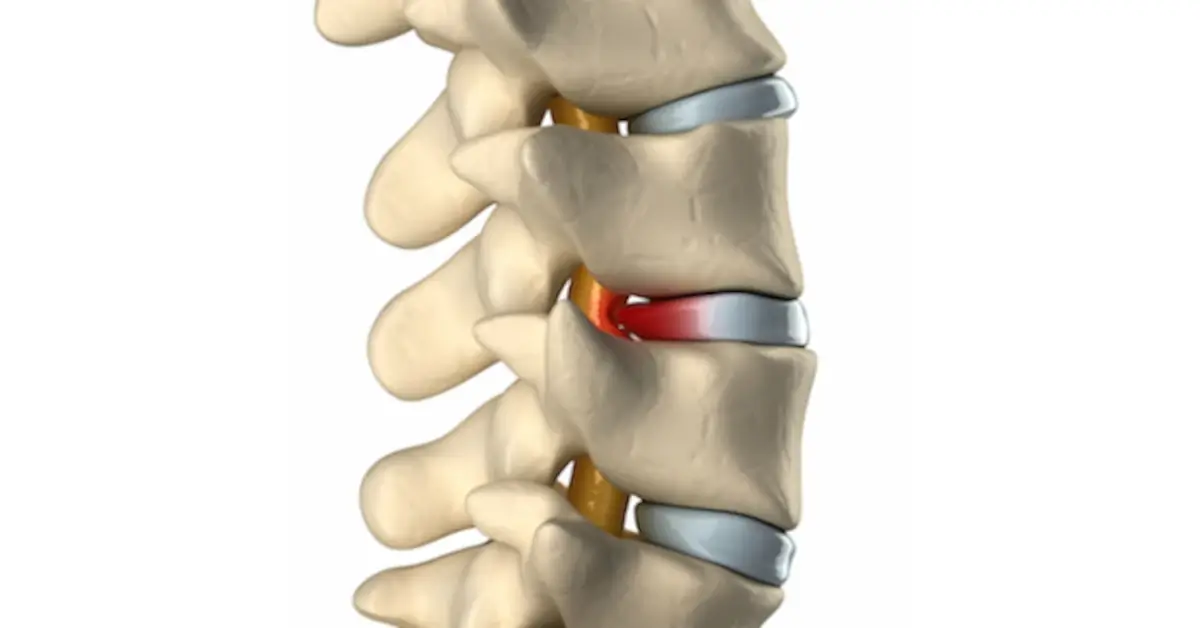In many cases, patients with back pain, leg pain, or weakness of the lower extremities are diagnosed with a herniated disc (also called a slipped, bulged or ruptured disc).
If you have a slipped disc, it means one of the discs that sit between each of the bones in your spine has been damaged. Rubber-like discs pad the bones of the spine. When one of these discs bulges out into the spinal canal, it tends to push against the root of a nerve. This causes intense back pain, and may also cause numbness and weakness in the area of the body where the nerve travels. Depending on which nerve is affected, pain or tingling may run down into the buttocks, hip, and leg. A herniated disc in the lower back that cause this numbness in the buttock and down the leg is called sciatica. Sciatica is the most common symptom of a herniated disc in the lower back. Unlike the pulsating pain caused by muscle spasms, pain from a herniated disc usually is continuous.
Herniated discs can occur in any part of the spine. Herniated discs are more common in the lower back (lumbar spine), but also occur in the neck (cervical spine). The area in which you experience pain depends on what part of the spine is affected.
While there are surgical procedures for herniated discs, in most cases these are a last resort or indicated for relatively rare conditions that require immediate surgical intervention. In most cases, when faced with a disc herniation, you need not panic. As long as there are no signs of serious deterioration or other conditions in which early surgery is recommended, you can very safely use non-invasive methods of treatment.
Often a herniated disc will resolve itself, and painful symptoms disappear. The estimated time for alleviation of pain is approximately six weeks. When a herniated disc heals on its own, your body breaks down and absorbs the jellylike nucleus inside the disc, a process called resorption.
In light of current study data, the American Academy of Orthopedic Surgeons now recommends that you wait at least three to six months before deciding to have surgery unless there is a progressive neurological deficit.
Among non-invasive procedures, a herniated disc is frequently treated with nonsteroidal anti-inflammatory medication if the pain is only mild to moderate. An epidural steroid injection may be performed utilizing a spinal needle under X-ray guidance to direct the medication to the exact level of the disc herniation. Your doctor may recommend physical therapy. These are all options offered by The Center for Musculoskeletal Disorders.
There are several important steps you can take on your own when faced with a herniated disc. For example, keeping active, taking over-the-counter painkillers, and using heat treatments may all give you some pain relief.
Keeping active means getting on with your normal activities, including going to work. You should avoid sitting still for long periods. Walking or swimming may also help.
You may find your pain increases at first when you start moving around. This is normal and doesn’t mean you are causing more damage to the spine or the slipped disc. This pain should settle quite quickly, allowing you to gradually increase the amount of movement or exercise you are doing.
Pain management involves treatment of the underlying condition, such as a herniated disc, with appropriate medications as well as pain relief using medications and alternative techniques such as acupuncture, ice and heat application and massage. These and other treatments are all offered by our team of Orthopedic Doctors at The Center For Musculoskeletal Disorders.

